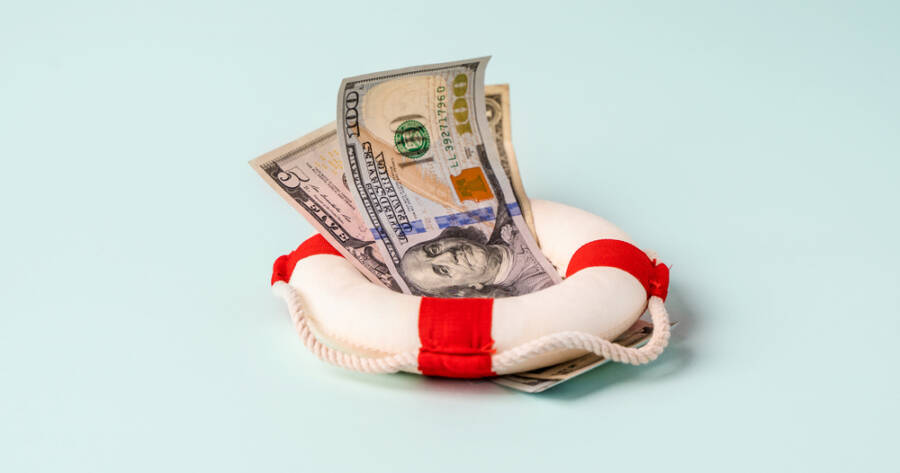An emergency fund provides a financial safety net for unexpected expenses like medical bills, car repairs, or job loss. But saving money doesn’t have to mean giving up everything you enjoy. With the right strategy, you can build a strong financial cushion while still dining out, traveling, and enjoying life! Small adjustments, smarter spending habits, and creative savings techniques are key to helping you grow your emergency fund without feeling like you’re constantly making sacrifices.
Budget and Make a Savings Plan
Building an emergency fund starts with a solid plan. Begin by reviewing your income and expenses to determine how much you can realistically set aside each month. Even small amounts add up over time, so aim for a consistent saving habit rather than large, one-time deposits.
The 50/30/20 rule is a great guideline! This means allocating 50% of income to needs, 30% to wants, and 20% to savings and debt repayment. If your budget is tight, look for areas where you can cut back slightly without making drastic lifestyle changes. Treat savings like a bill that must be paid each month to ensure steady progress. Having a clear plan makes it easier to stay committed and build your financial safety net.
Open a Dedicated Savings Account and Automate Contributions
If you don’t already have a savings account, open a separate one specifically for emergencies. Keeping your emergency fund in a separate account helps prevent you from dipping into it for everyday expenses. High-yield savings accounts are a great option because they allow your money to grow with interest while remaining easily accessible when needed.
To make saving effortless, set up automatic transfers from your checking account to your emergency fund. Automating savings removes the temptation to spend first and save later. Even if you start with just $20 or $50 per paycheck, automatic contributions will add up over time and help you build a strong financial cushion.
Cut Unnecessary Expenses Without Major Lifestyle Changes
You don’t have to give up everything you enjoy to save money, just be strategic. Start by reviewing subscriptions and canceling any services you don’t use regularly. Eating out one less time per week, brewing coffee at home, or shopping around for grocery sales can also free up extra cash for your emergency fund. The ultimate goal is to look for small changes that make a difference without making you feel deprived.
You can also consider using cashback apps, shopping at discount retailers, or finding free entertainment options instead of costly activities. Redirecting even $5 or $10 per day toward savings can make a significant impact without disrupting your lifestyle.
How Much Should You Have in Your Emergency Fund?
A fully funded emergency fund should cover three to six months’ worth of living expenses, but you don’t need to save it all at once. Start with a mini goal of $500 to $1,000, which is enough to handle minor emergencies like car repairs or medical bills.
Once you reach that milestone, aim to save one month’s worth of expenses, then gradually work your way up. If you have unstable income or dependents, aim for six months of savings for extra security. The key is to build your fund step by step, without stressing over the total amount.
When to Use Your Emergency Fund (and When Not To!)
An emergency fund is meant for unexpected, essential expenses. It’s not for vacations, shopping sprees, or non-urgent purchases. It should be used for things like medical emergencies, car repairs, job loss, or urgent home repairs. If you find yourself reaching for emergency savings too often, reevaluate your spending habits to ensure you’re not misusing it.
For planned expenses, create a separate savings account to avoid dipping into your emergency fund unnecessarily. Before withdrawing money, ask yourself: “Is this a true emergency?” If not, consider alternative solutions like adjusting your budget or cutting back in other areas.
Keep Growing Your Fund Without Feeling Restricted
Once you’ve built a solid emergency fund, keep the habit going by continuing to save regularly. Periodically increase your contributions when possible, such as when you get a raise, bonus, tax refund, or side income.
Avoid viewing your emergency fund as “complete.” Financial stability is an ongoing process, and maintaining a cushion ensures you’re always prepared. And finally, remember to celebrate milestones along the way to stay motivated! The goal is to protect your financial future without sacrificing the things that make life enjoyable.
Secure Your Future Without Sacrificing Your Present
Building an emergency fund doesn’t mean giving up the things you enjoy! It’s about creating financial security while maintaining balance. By saving consistently, automating contributions, and making small adjustments to spending, you can grow your fund without feeling deprived.
Life is unpredictable, and having a financial cushion ensures that unexpected expenses don’t derail your progress. The peace of mind that comes with financial stability is worth the effort, allowing you to enjoy life today while preparing for whatever comes next.

